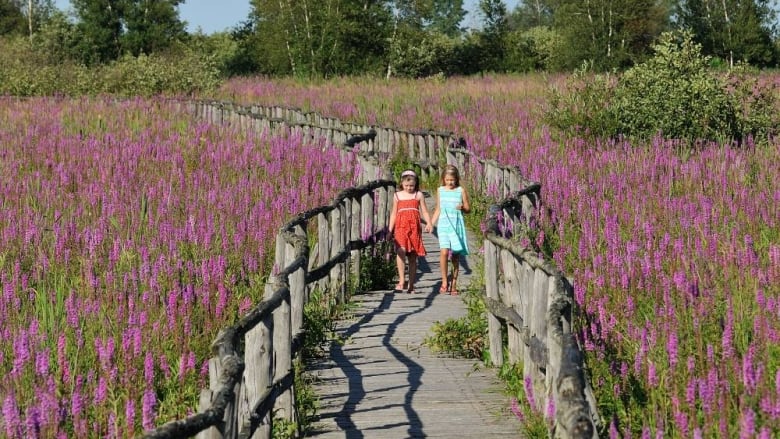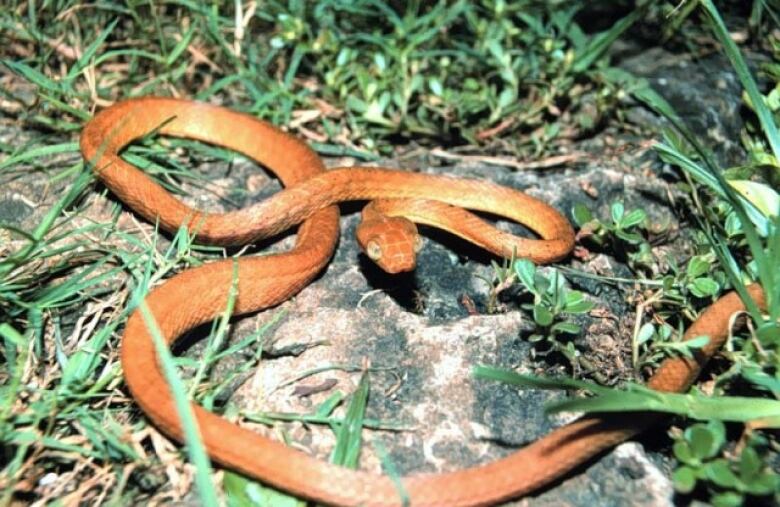Battling invasive species can be a mistake, ecologist says
Humans may be the only real invasive species, Ken Thompson says

Invasive species are often near the top of the list when it comes to threats to the environment.Weve all seen headlines about the explosive spread of razor-sharp Zebra mussels, huge new populations of voracious lake-invading Asian carp, or forest-destroying alien insects, such as the emerald ash borer.
But our panic about invasive species might be a major mistake, according to veteran ecologist Ken Thompson.
Professor Thompson, a senior research fellow in the Department of Animal and Plant Sciences at the University of Sheffield in England,thinks there is good evidence to suggest that the plants and animals we often vilify as invasive species only rarely threaten ecosystems.
He adds that our expensivefightsagainst them often domore damage than the invader might have caused in the first place.
In an interview on CBC Radios Quirks & Quarks, he discusses thecontroversial idea that heexplored in his new book,Where Do Camels Belong - Why Invasive Species Aren't All Bad.
Professor Thompson begins with the story of the camel. Camels are a really neat way of illustrating the problem of where species actually belong, he says.
Camels evolved in North America, where they lived until 8,000 years ago. Theyonly spread or invaded the rest of the world fairly recently.

Nature, he says, has moved species around throughout history, and while were doing it faster and more frequently than in the past, nature tends to be up to the challenge.
Invasive species are often assumed to be driving native species to extinction when they spread into places that dont have the predators and diseases that normally control their populations.But Professor Thompson suggests that the evidence to support this idea is often not very strong.
He points out that these ecosystems are often already damaged by human activity.Pollution, over-exploitation of native species, and pressure from development have compromised natural systems.
As a result, he says that often the invaders aren't actually displacing indigenous plants or animals.Most of the time, alien species are simply responding to opportunities that human changes to the environment have created.
- Listen to the interview with Professor Ken Thompson onQuirks & Quarkson Saturday, Dec. 6 at noon on CBC Radio.
Research is also suggesting that many invaders may not be as damaging as we have assumed. One example is Purple Loosestrife, an Old Worldplant that was introduced to North America and has quickly spread through wetlands here.It built a reputation for crowding out native plants and completely taking up their space with tall and colourful stalks and flowers.
But Professor Thompson says that the plant's conspicuous naturefooled us. Scientific study of Purple Loosestrife has shown that it actually has very little impact on the biodiversity of the wetlands into which it spreads, and may even provide some benefit by supplying more food for native pollinators.

Professor Thompson is careful to acknowledge that there are some real bad actors out there - truly damaging invaders.The Brown Tree Snake, for example, annihilated the indigenous birds of Guam after it was introduced to the Island after World War II.But he says it is often difficult to identify the truly damaging invasive species in advance, because their impact can vary with timeas ecosystems evolve and respond to them.
Given the complexity and dynamic nature of the relationships in any ecosystem, predicting how each case will turn out is very difficult.
He also cautions that our efforts to control or eliminate invasive species can be tremendously expensive, are rarely successful, and often have damaging unintended consequences.For example, the herbicides used to try to eliminate invasive plants often have devastating impact on vulnerable native species.
The cure, in some of these cases, is worse than the disease, he says.
Professor Thompson says the invasive species we might worry about most is actually us.Humans have spread to every corner of the globe, and altered a huge amount of the planet.
Weve chopped down forests, built damsand turned the whole world into a giant cattle pasture, and then were surprised that some species quite like what weve done. We shouldnt be surprised.












_(720p).jpg)


 OFFICIAL HD MUSIC VIDEO.jpg)
.jpg)



























































































